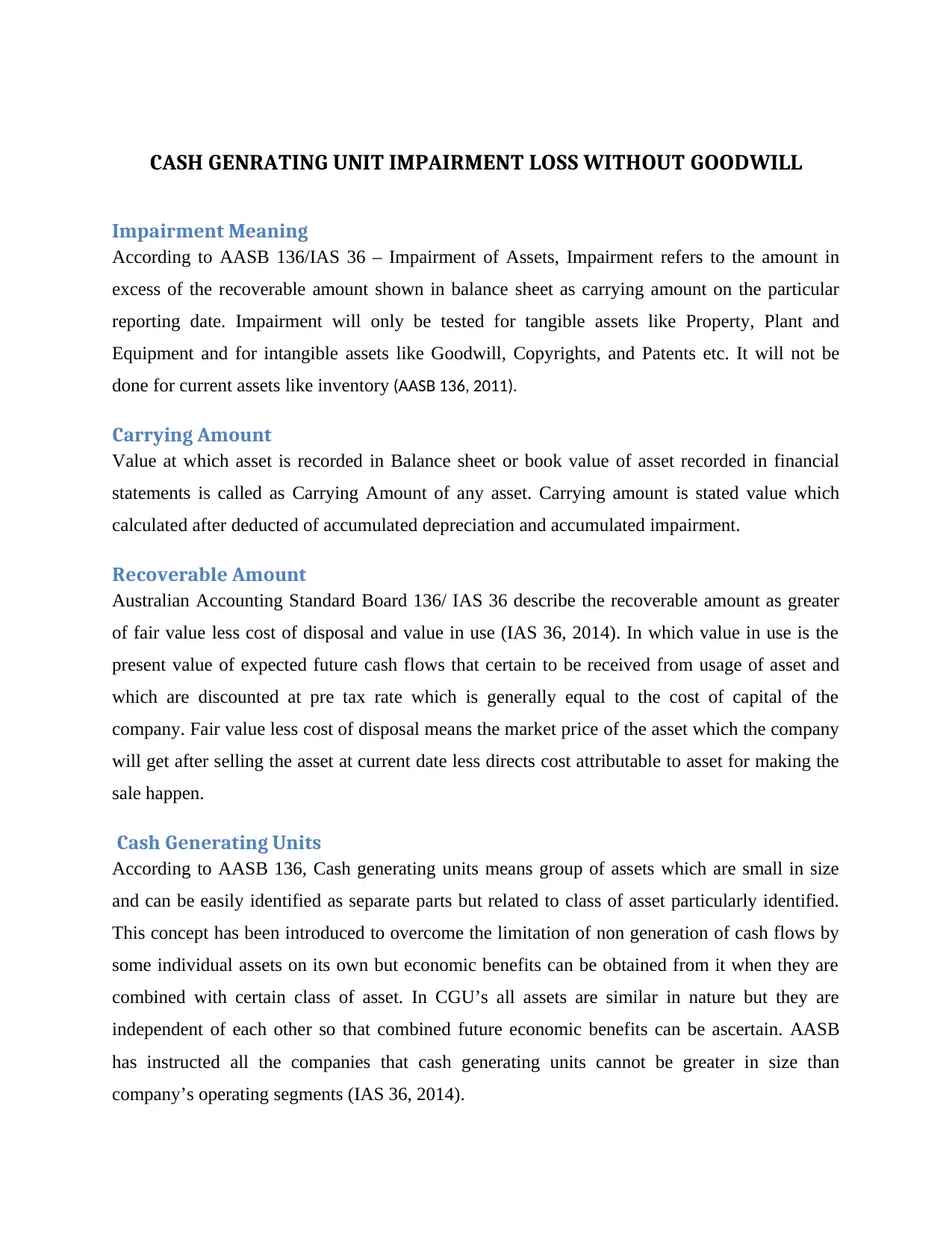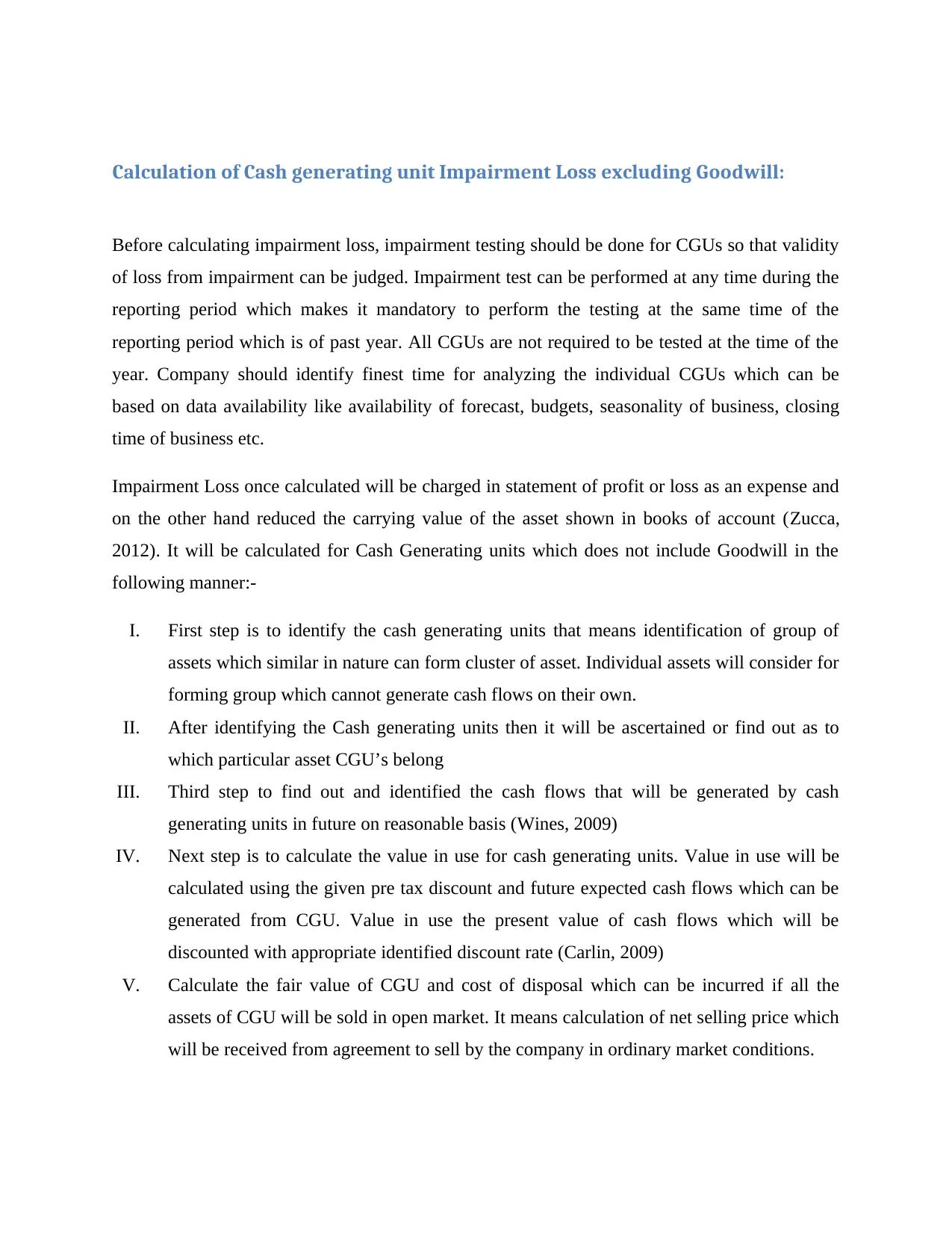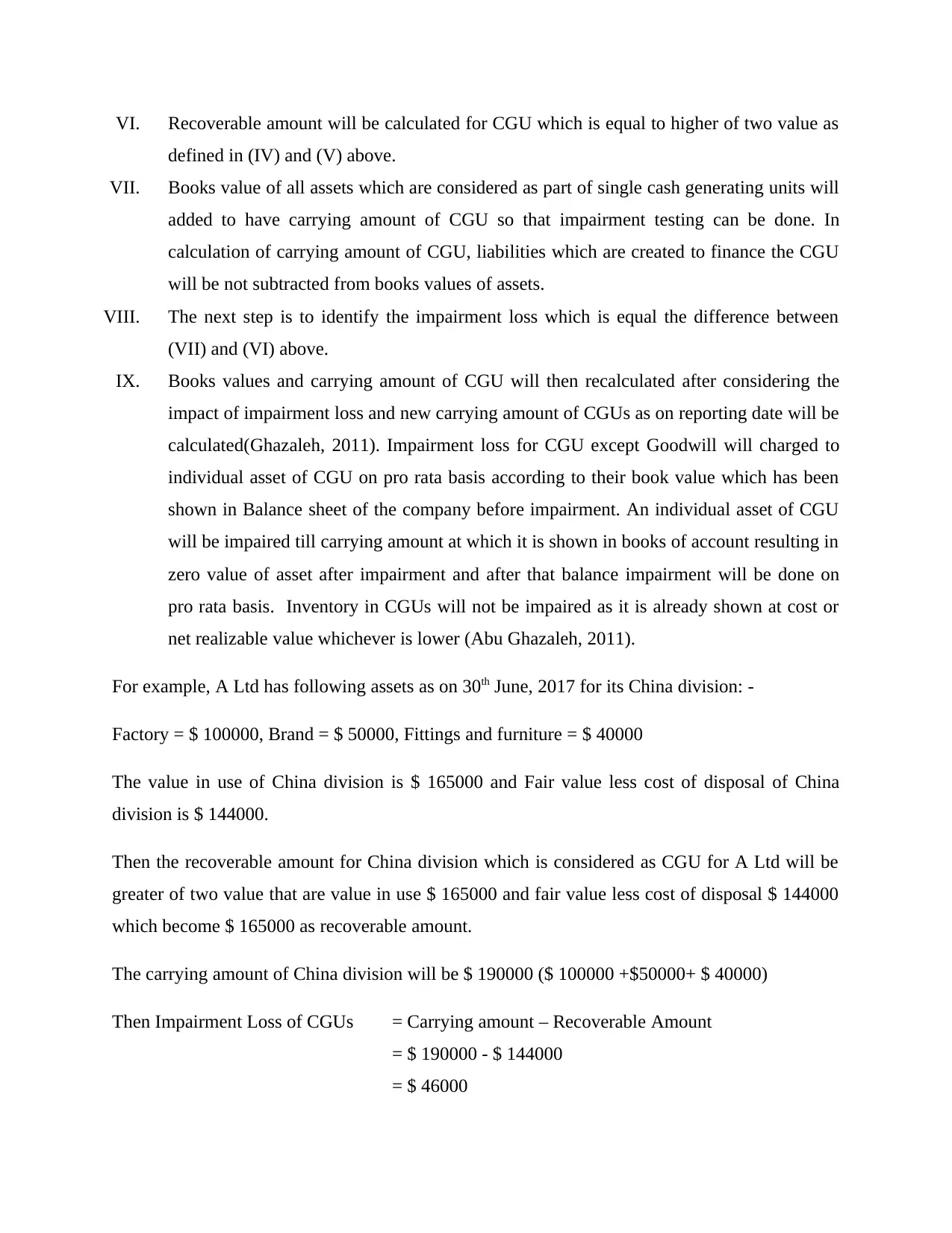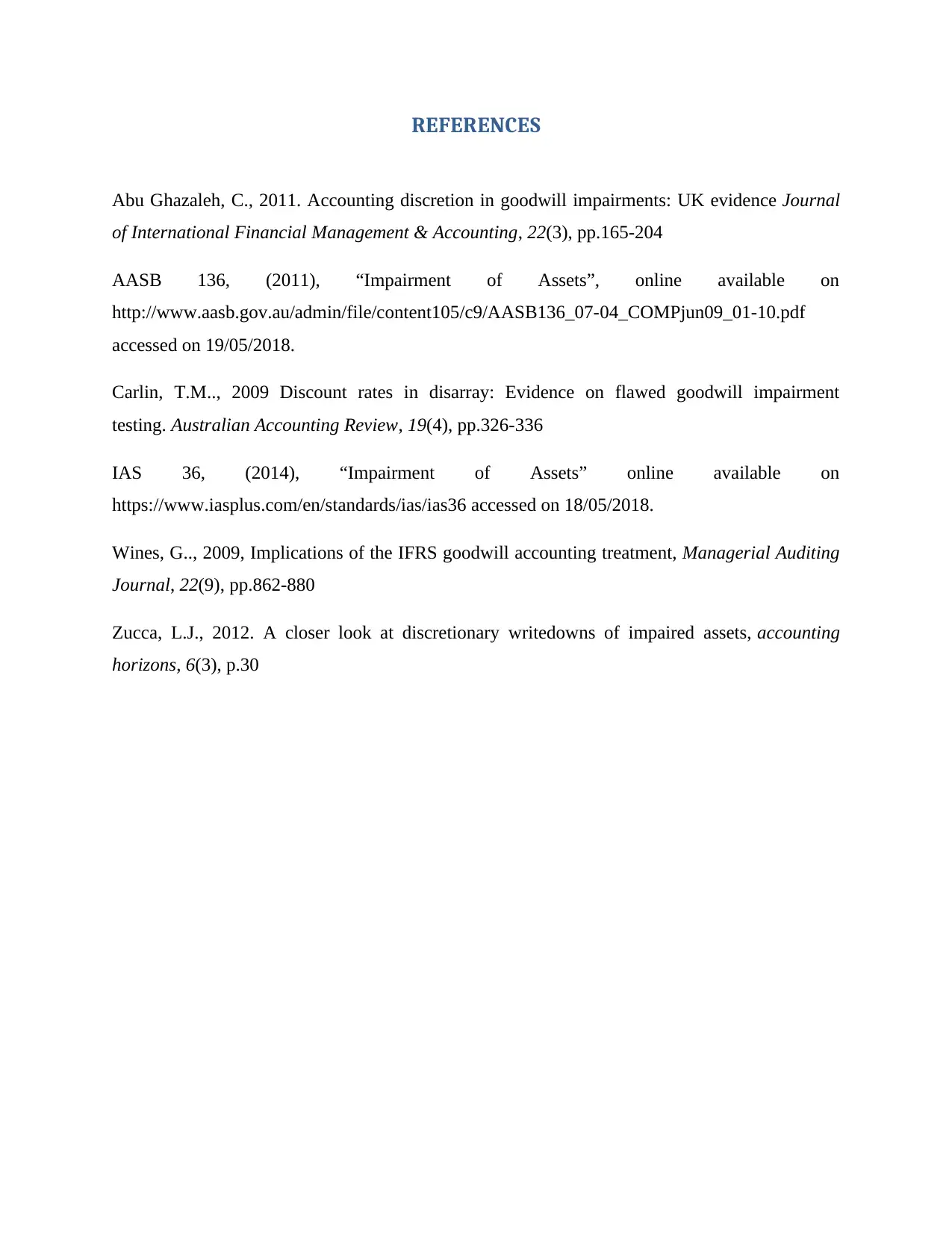Report on Calculating Impairment Loss for CGUs Excluding Goodwill
VerifiedAdded on 2021/06/17
|4
|1301
|145
Report
AI Summary
This report provides a comprehensive overview of impairment loss calculations for Cash Generating Units (CGUs), specifically excluding goodwill. It defines key terms such as impairment, carrying amount, and recoverable amount, referencing AASB 136/IAS 36 accounting standards. The report explains the calculation process, including identifying CGUs, determining future cash flows, calculating value in use and fair value less costs of disposal, and finally, determining the impairment loss. The report also details how impairment loss is charged to individual assets within a CGU on a pro rata basis, and includes a practical example to illustrate the calculation. Relevant references are also provided.
1 out of 4










![[object Object]](/_next/static/media/star-bottom.7253800d.svg)